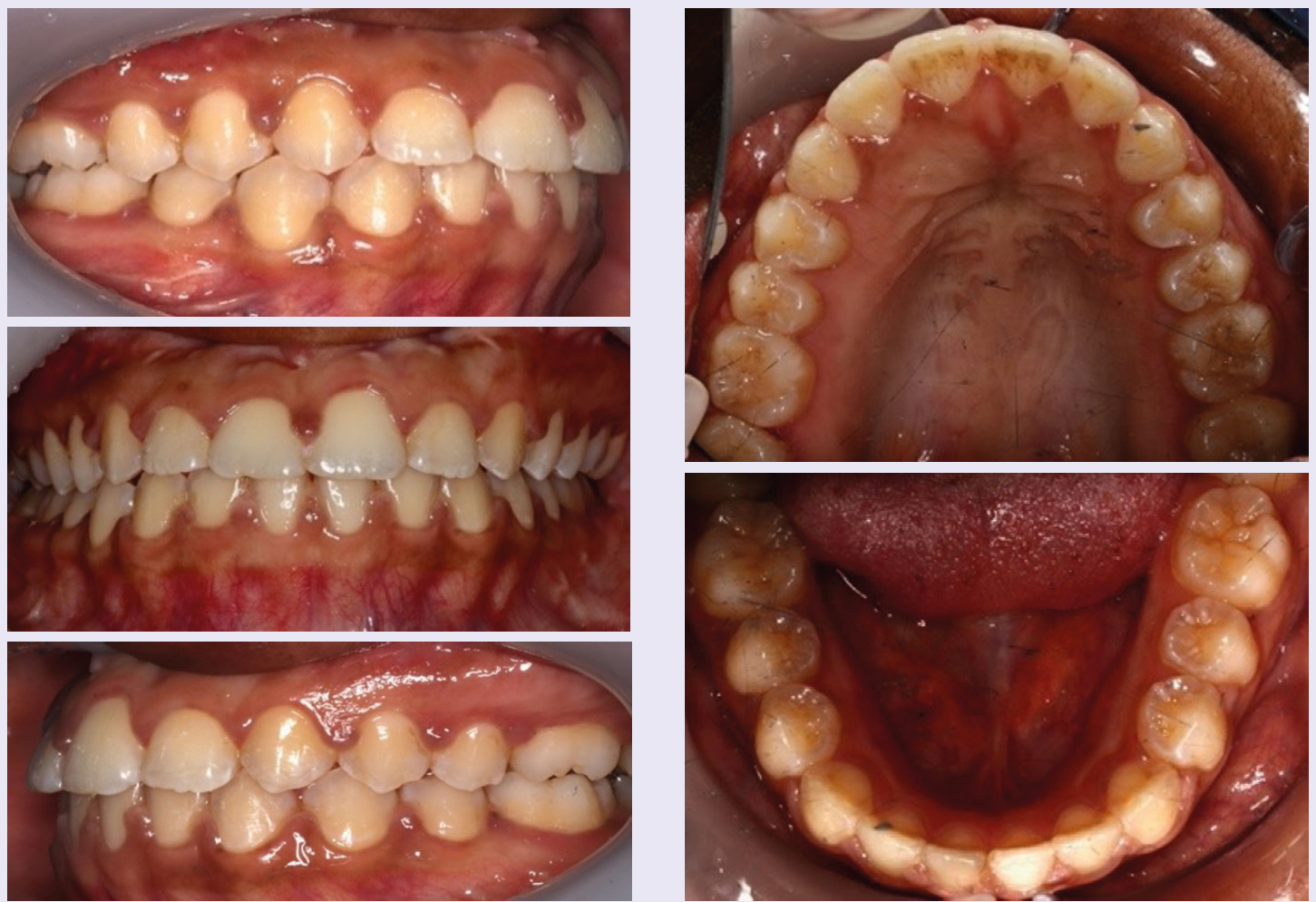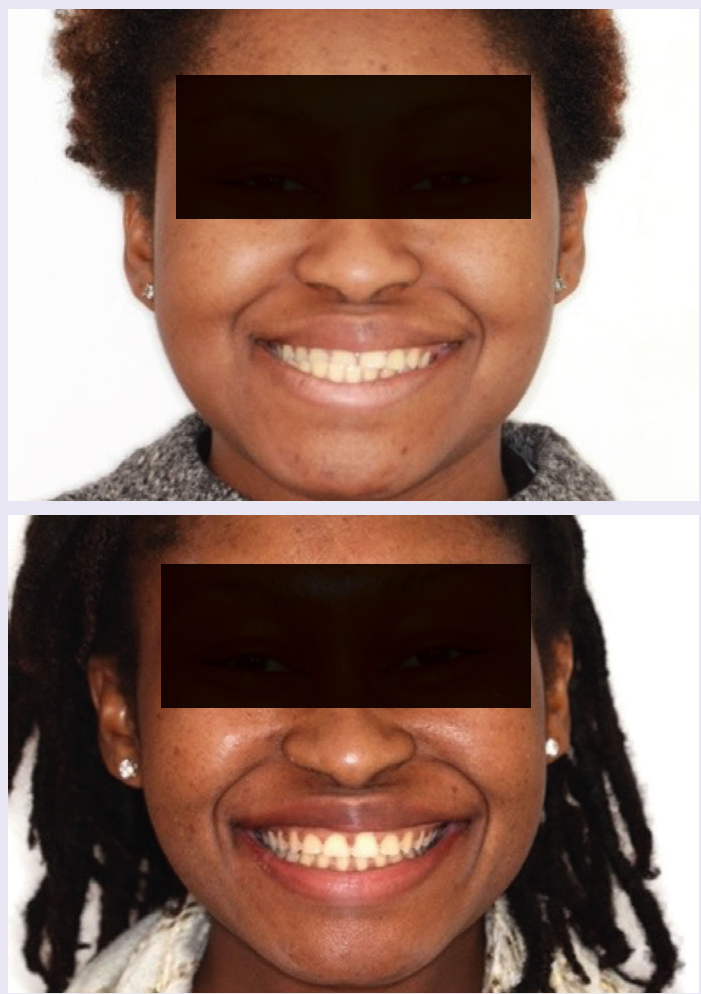Article

The key to achieving a good final result for this patient is centred on correctly diagnosing that the asymmetry is not just in the mandible, but also in the maxilla. If, for example, only a bilateral sagittal split osteotomy (BSSO) differential set back was performed on this patient, then after orthodontic decompensation, it is likely that an excellent occlusal result would be achieved, but the maxillary cant would still exist and the chin would still be slanted to the right. A genioplasty could be undertaken to achieve chin correction, but this would still leave a maxillary cant that would be noticeable when smiling. Often, surgeons are not keen to complete genioplasties at the same time as BSSO surgery and so, a separate surgery date would be required resulting in another recovery period, further risk of paraesthesia and increased cost and inconvenience.
Although there was a great deal of discussion with the oral and maxillofacial team about whether to go with a BSSO differential set back versus a bimaxillary procedure, it was essential to go with the bimaxillary procedure (after orthodontic decompensation) with an impaction of the maxilla of 3 mm on the left, ‘tilted’ on the midline, to achieve an optimal result. Figure 1 illustrates the extra-and intra-oral results of treatment, and Figure 2 shows the extra-oral comparison before and after treatment.


Compliance with Ethical Standards
Conflict of Interest: The author declares that he has no conflict of interest. Informed Consent: Informed consent was obtained from all individual participants included in the article.

